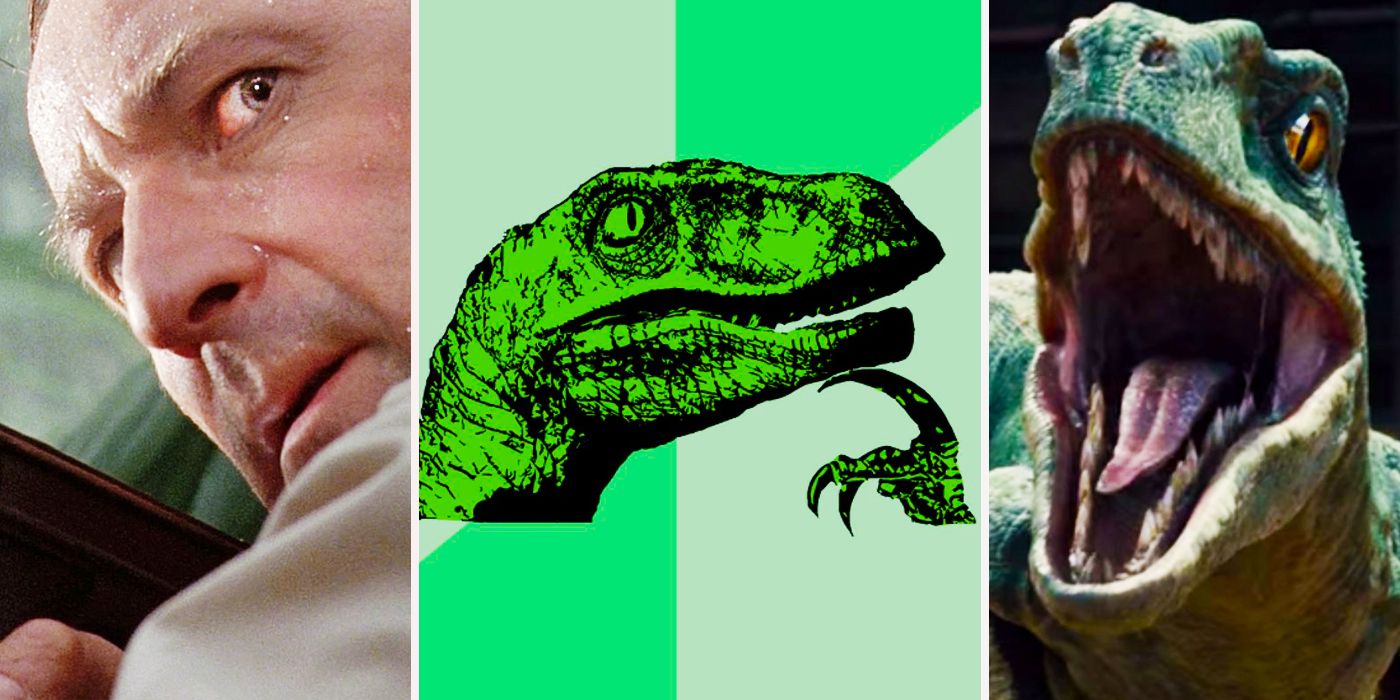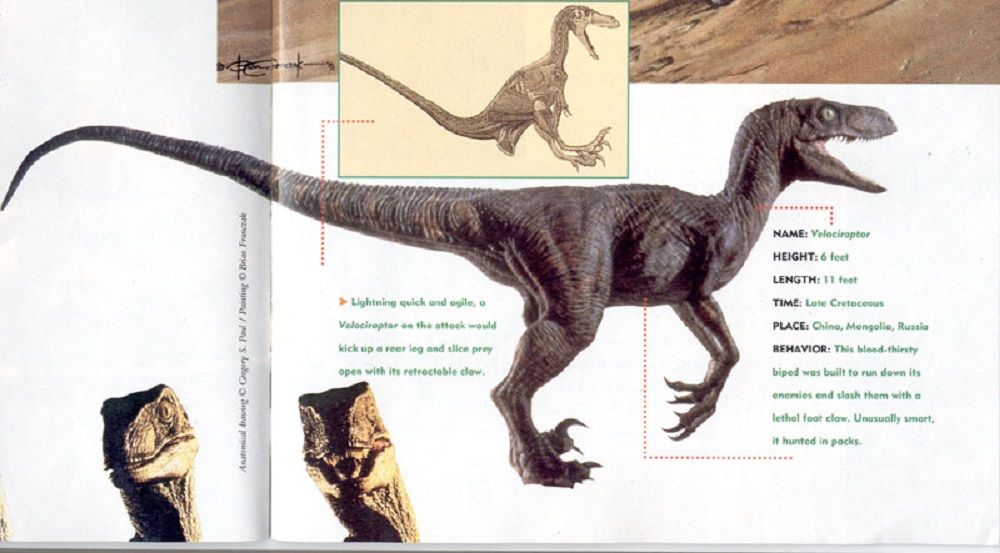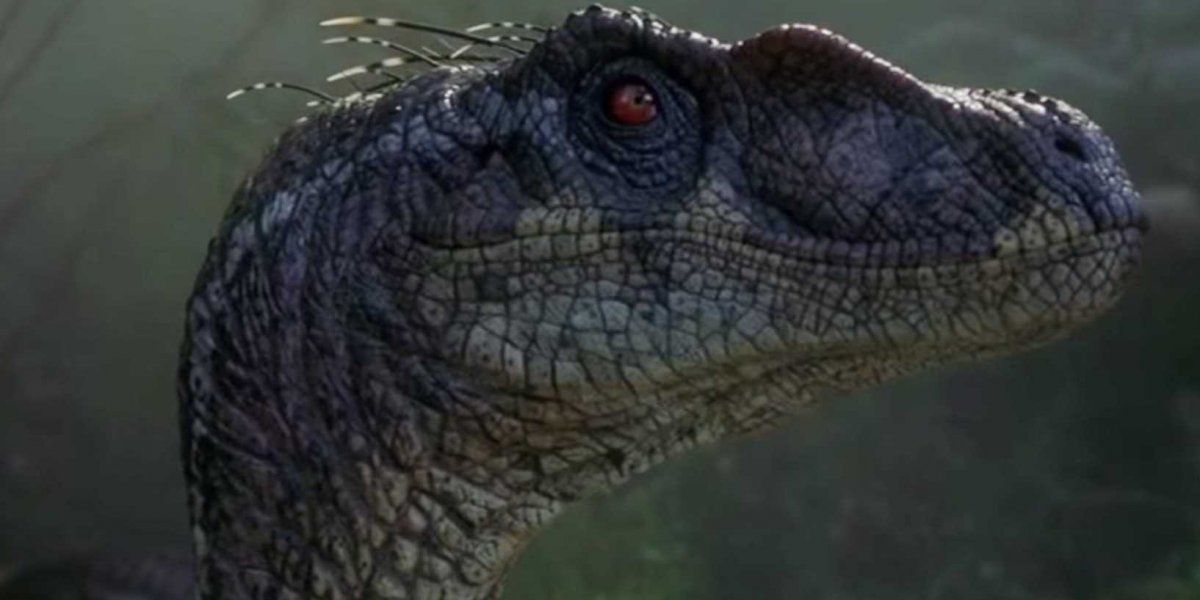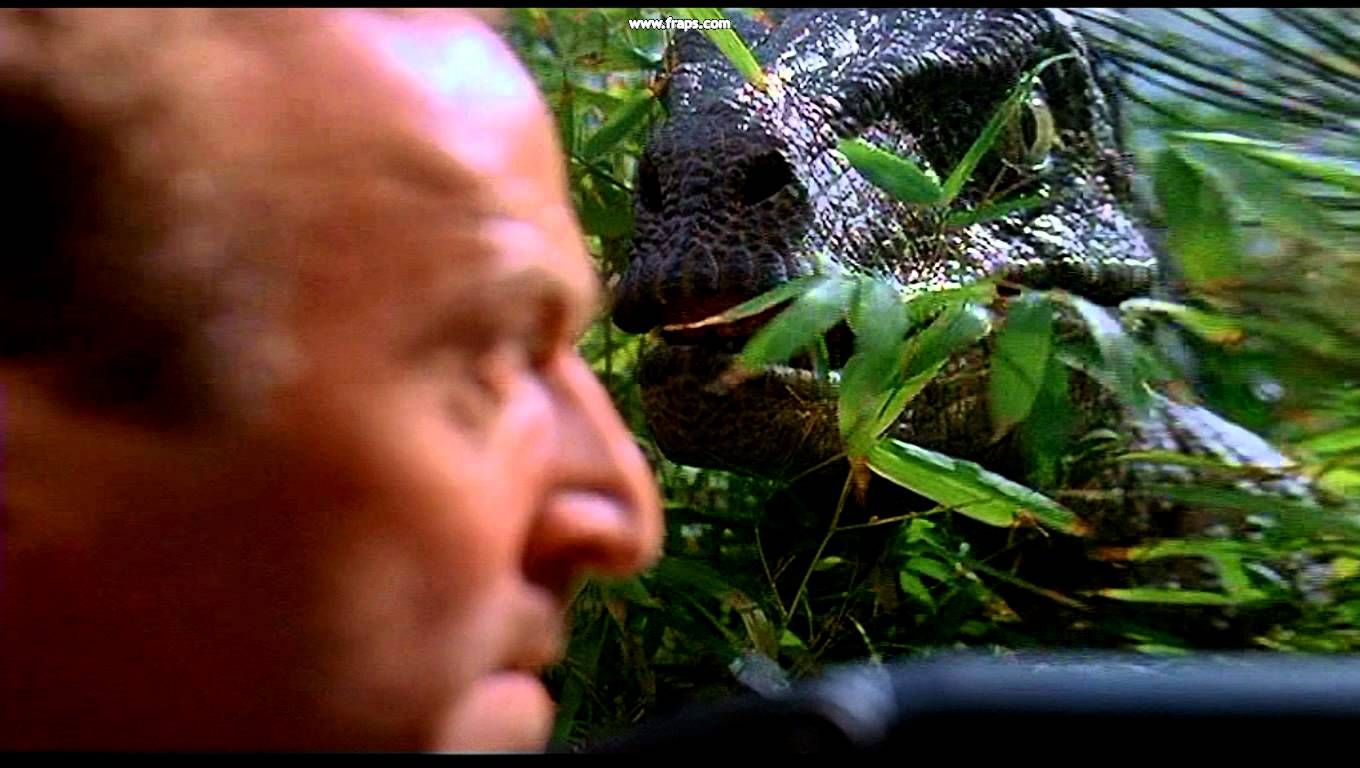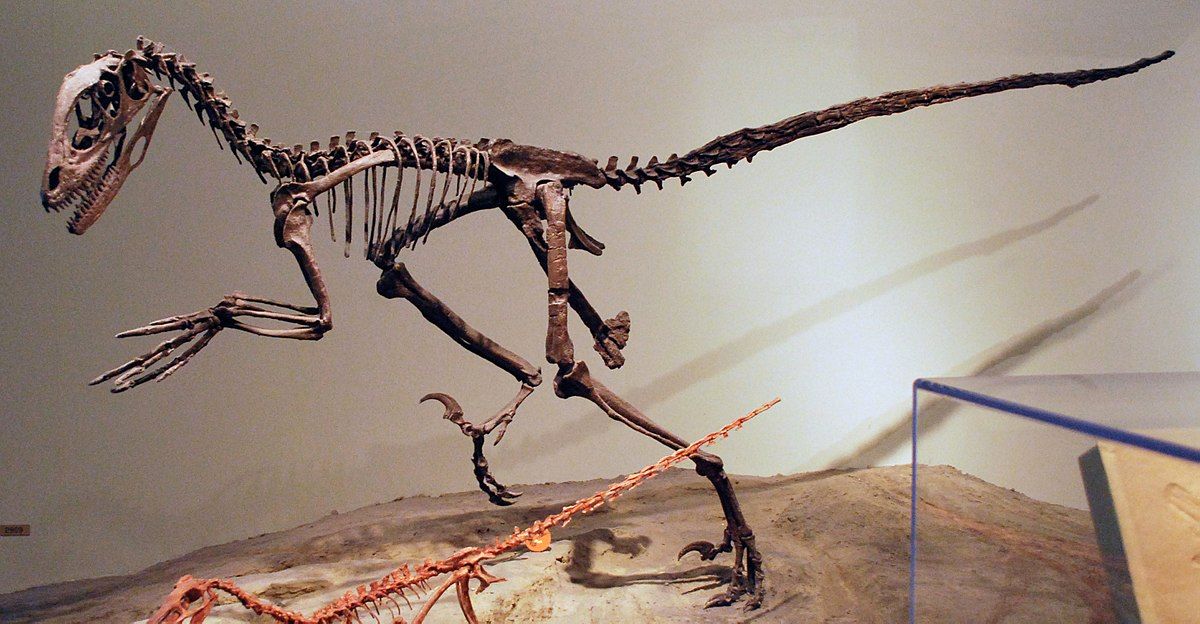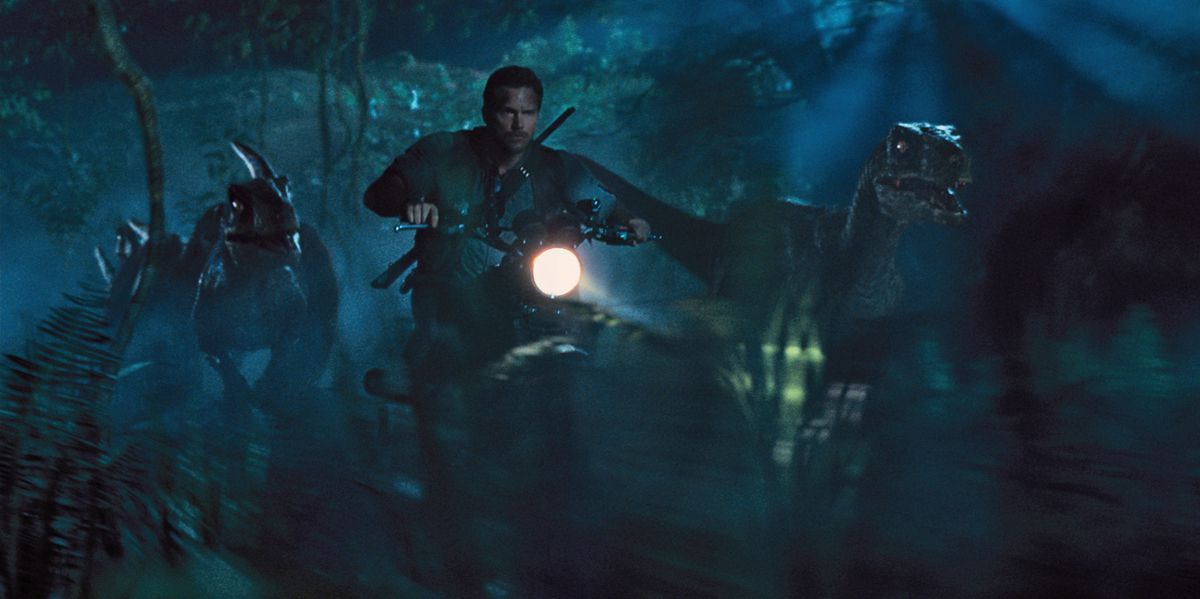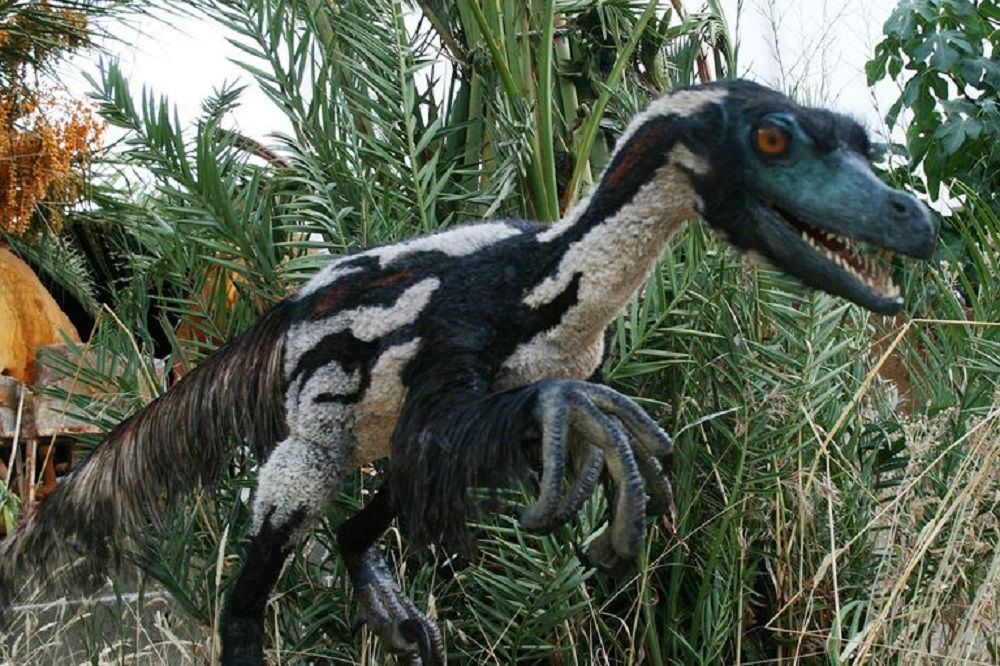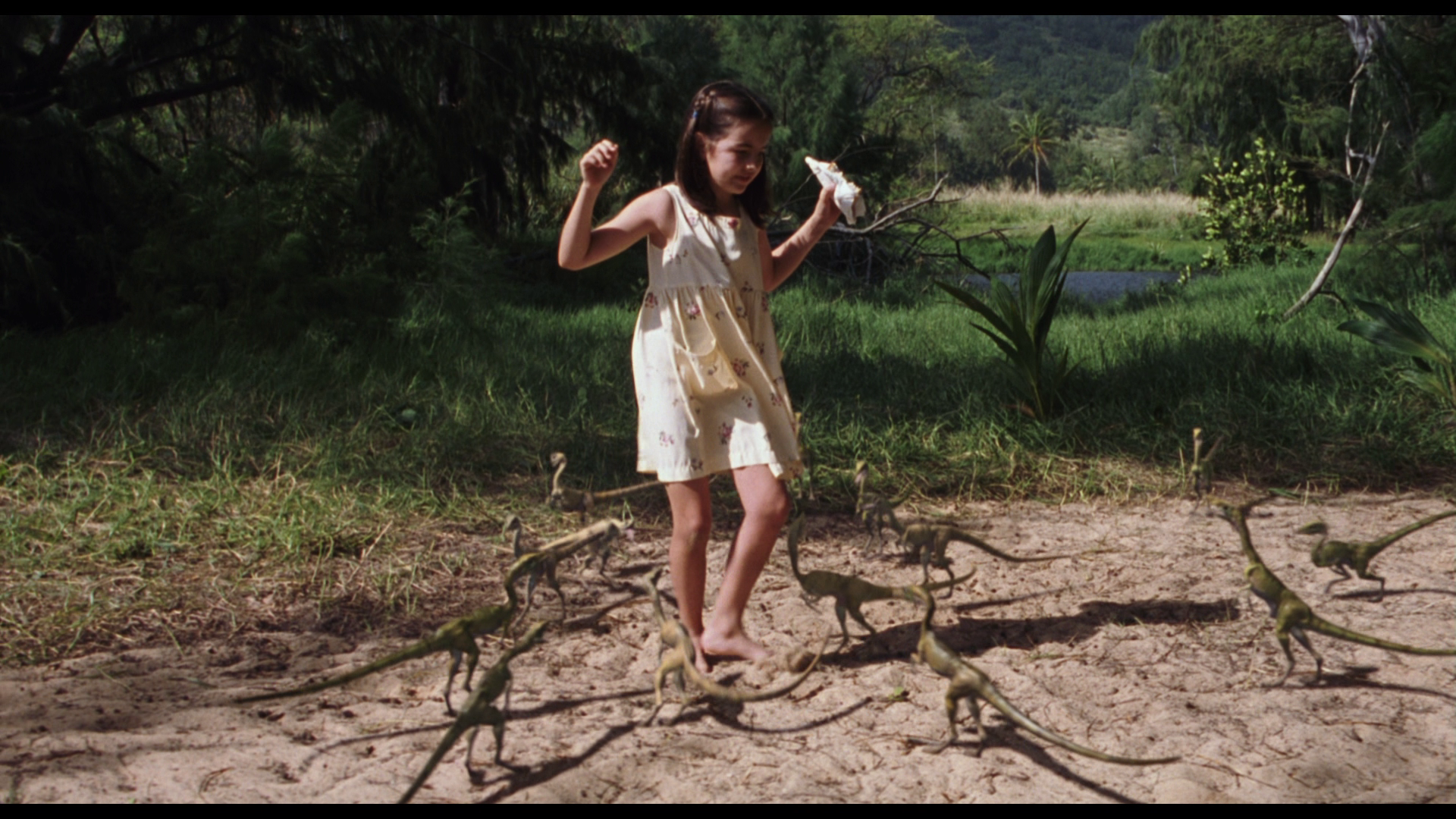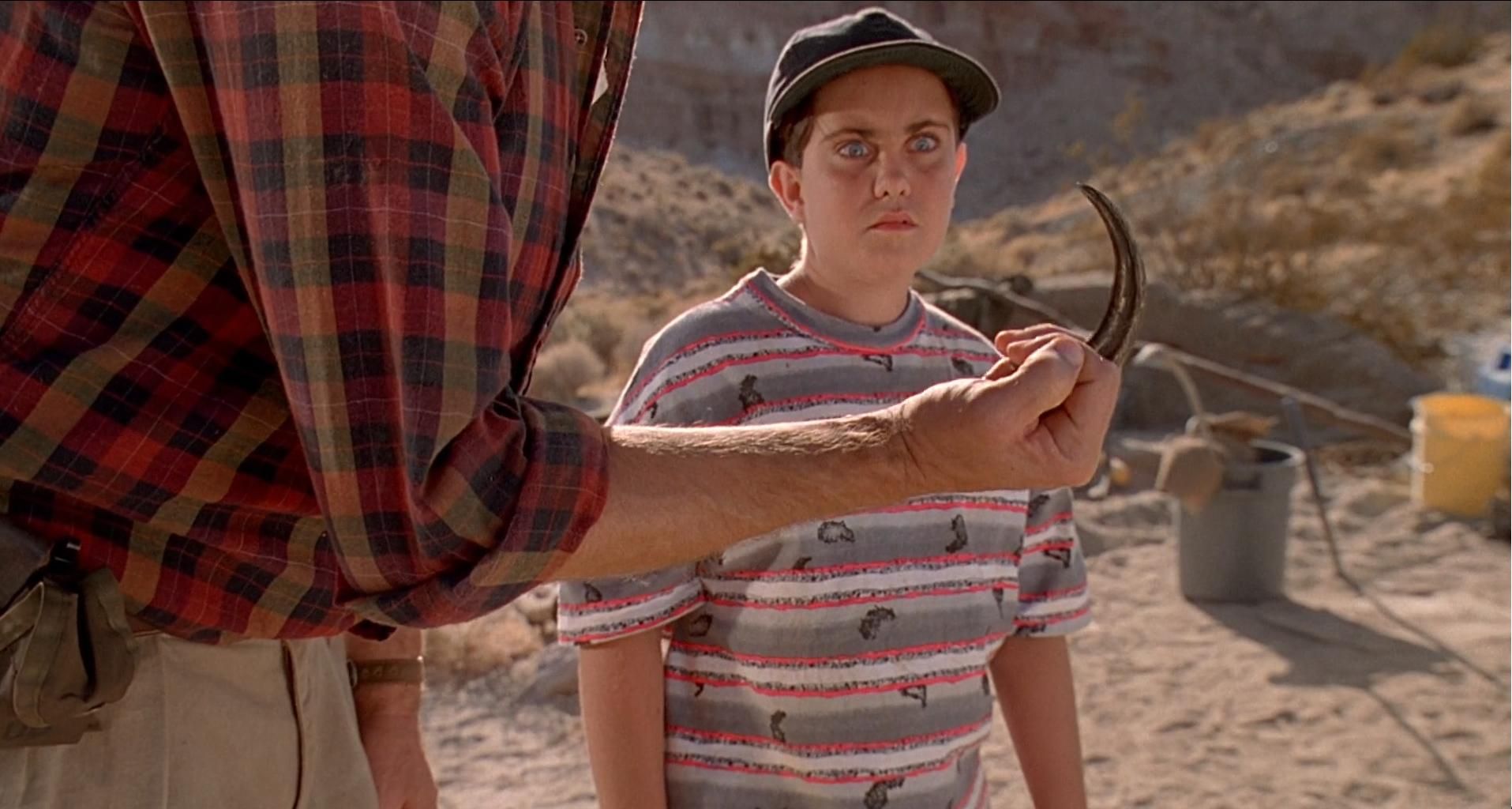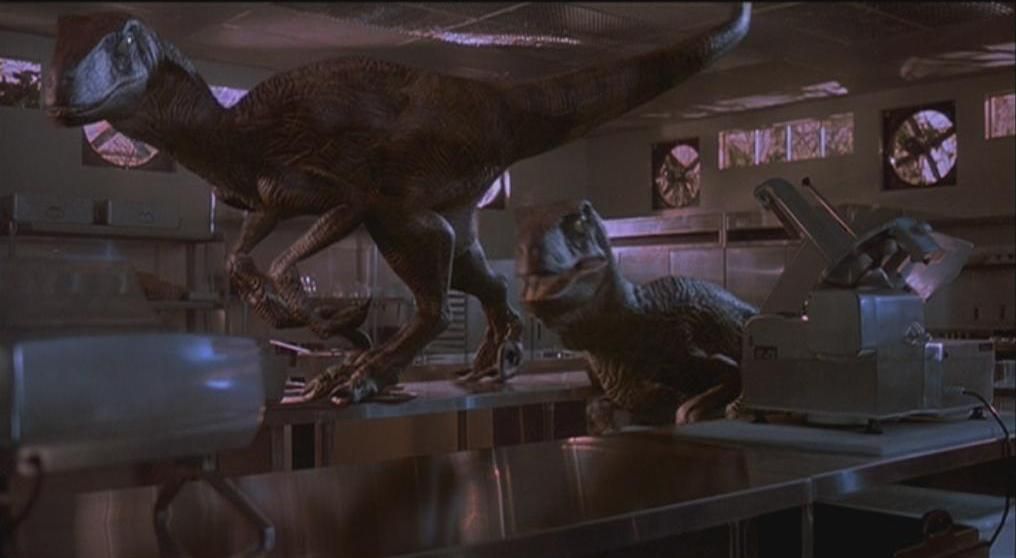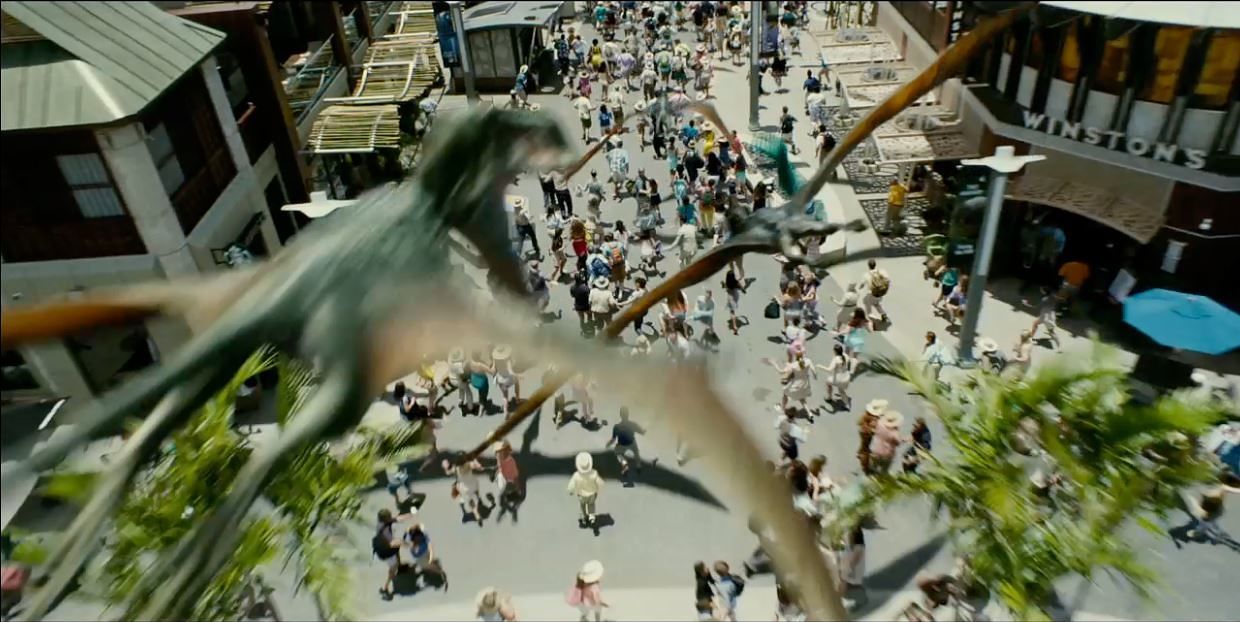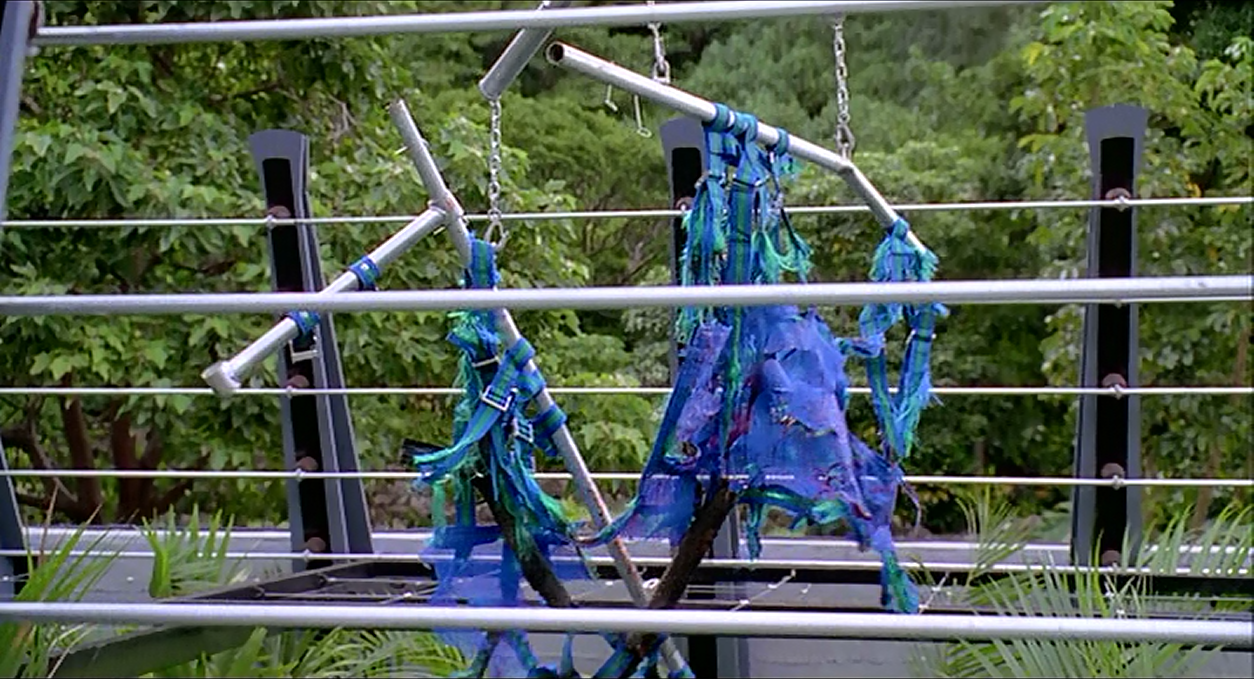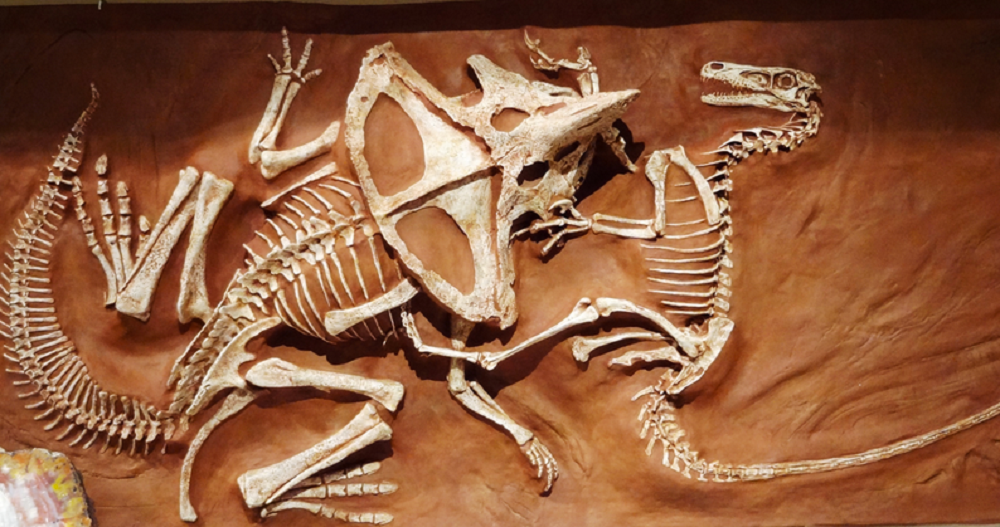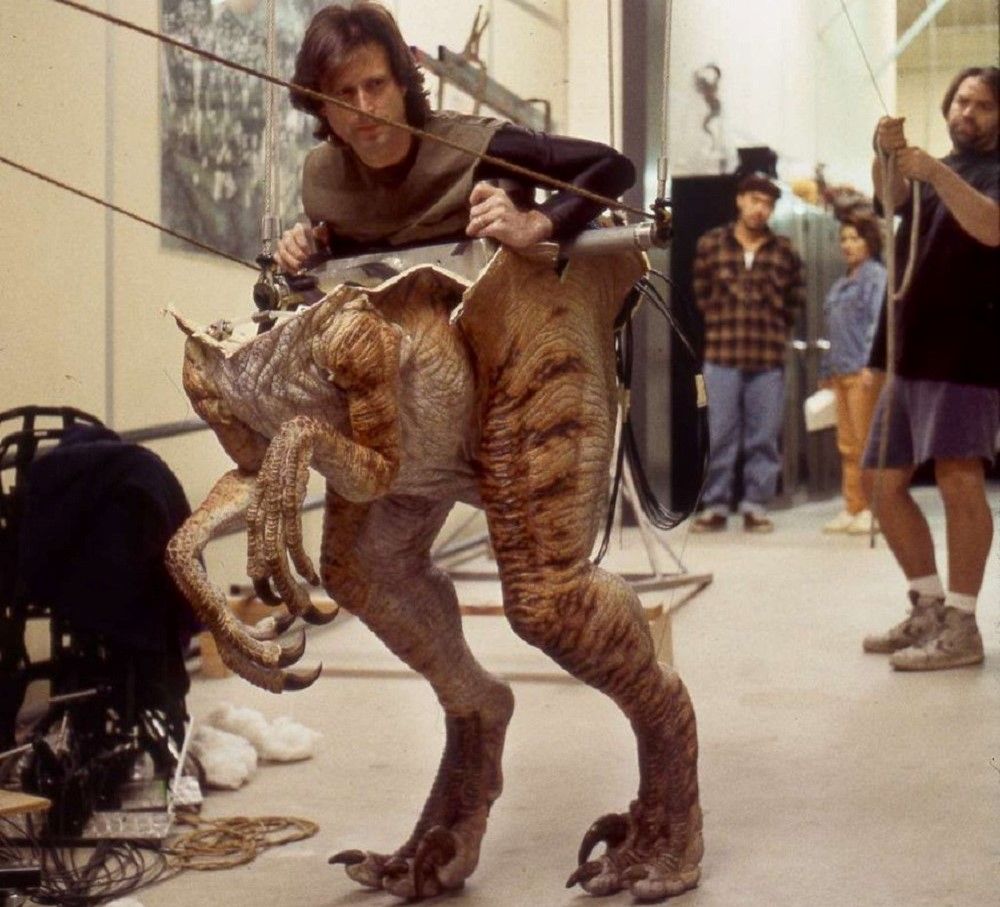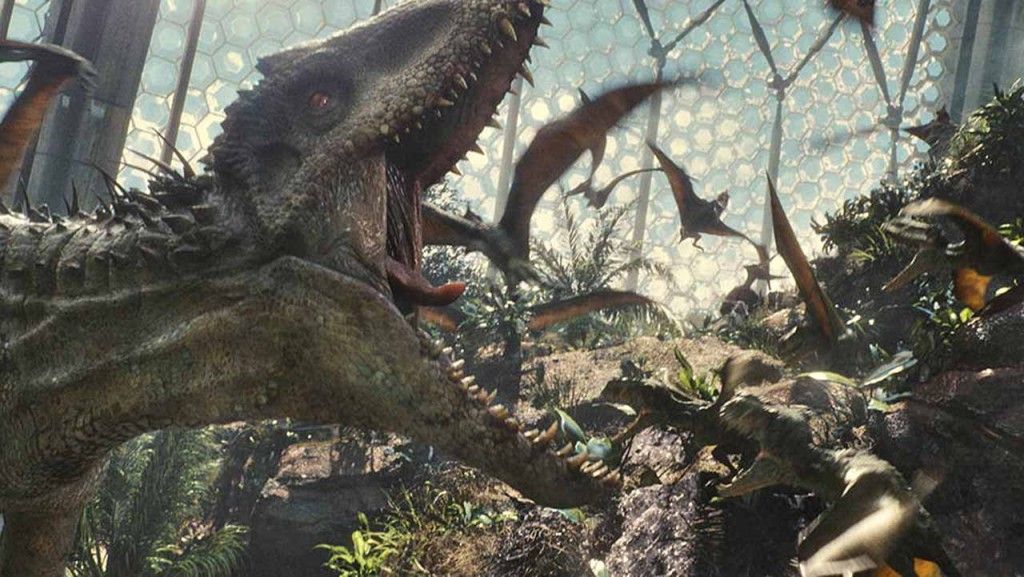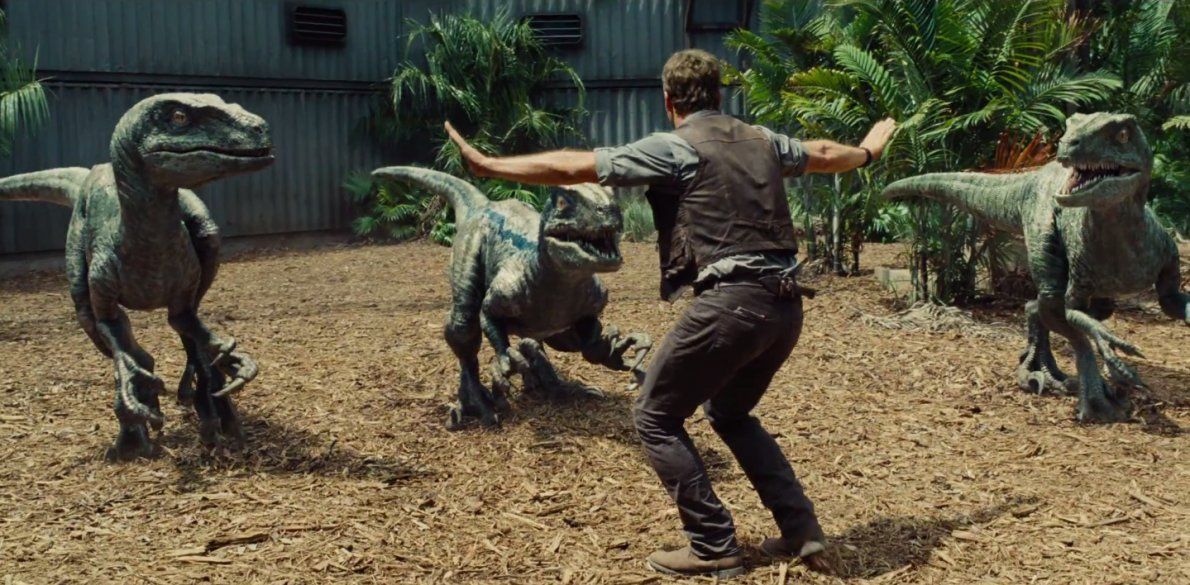From the first time we saw the opening scene in the very first Jurassic Park movie, we have been terrified of the Velociraptor. Next to the Tyrannosaurus rex, is there anything so terrifying or iconic as the Raptors in these films? Since Jurassic Park first hit theaters in 1993, those creepy clicks and squeaks they emit as they communicate with one another, plotting our deaths, have haunted us. The suspense in these movies, especially the first one, is so intense, mostly due to the presence of the killer Velociraptors. Who can forget the horrifying brilliance displayed by them in the Kitchen Scene?
When we found out that Raptors were actually real dinosaurs living during the Cretaceous Period, as stated in the beloved films, we got excited! How awesome would it be to see a real Velociraptor, opening doors, hunting in packs, and wreaking havoc on the public? Wait -- actually, we take it back -- crossing paths with a real-life Velociraptor would be about the last thing we’d want. Our palaeontologist friends have found that the Raptors were indeed voracious predators, as equally terrifying as their on screen counterparts -- although with some variations. Here are some of the most terrifying facts about Velociraptors that CBR dug up!
15 WHAT’S IN A NAME
In 1924, paleontologist Henry Fairfield Osborn discovered the first Velociraptor fossil. Since he was president of the American Museum of Natural History at the time, he got to do many important things, including picking names for new finds. Its name is a combination of the Latin words “velox,” meaning “swift,” and “raptor” meaning “robber or “thief.”
Velociraptor was named for the dinosaur's adept agility and carnivorous hunting style.
Despite this most epic moniker, Osborn had meant for the scientific name of the newly found creature to be Oviraptor -- or “egg stealer.” However, it was Velociraptor that stuck around -- partly because the public and scientific community were not exposed to Oviraptor until later. This is speculation -- but we’re going to guess that Velociraptor won out because its meaning is far more awesome -- as is the sound.
14 SIX FOOT TURKEY
In Jurassic Park, Velociraptors are tiny compared to the monstrous Tyrannosaurus rex. Based upon actual fossil finds, they would still be small compared to ol' Rexy -- but not nearly as large as they are depicted in the films. On screen, Velociraptors average about six feet tall and eleven feet in length. Weighing in at a hefty 330 pounds, these movie Raptors are a terror to all who cross their path.
In reality, the paleontology shows us a much smaller creature existed compared to what we see in the films. Fossils show that the Velociraptor was actually closer to three feet tall, and weighed around 30 pounds on average -- about the size of a turkey. It may not “sound very scary” -- as was so eloquently stated to Dr. Grant by "Volunteer Boy" in the first Jurassic Park. Still, these are not turkeys we would want to have an altercation with, and what they lost in size, they more than made up for in speed!
13 NOT A CLEVER GIRL
One point that the Jurassic Park movies continually drives home is the super intelligence of Velociraptors. From the first moment we are introduced to the species in the movies -- where the unloading of a Raptor goes horribly wrong due to human error -- the ability for these animals to perform critical thinking is so terrifying it rivals the raw power and mass of T. Rex. “They were testing the fence for weaknesses, systematically. They remember.”
Velociraptors were very intelligent, for a dinosaur -- which is like saying a turtle is fast, for a turtle.
The haunting words of Robert Muldoon echoed throughout the viewers minds when first we saw Raptors communicating and hunting in packs. In reality, Velociraptors were very intelligent, for a dinosaur -- which is like saying a turtle is fast, for a turtle. Raptors were not “smarter than dolphins, whales, and some primates,” as Dr. Alan Grant claimed in Jurassic Park III. Velociraptors were still smart enough to kill you, however.
12 MORE LIKE A DEINONYCHUS
Coming from Greek for “terrible claw,” the Deinonychus was a Raptor from the Cretaceous period -- the last of three scientific phases of dinosaur existence on this planet. The first fossils were discovered about 10 years after the initial Velociraptor bones were dug up -- and are much closer to the Raptors we see in Jurassic Park than their real life counterparts. In fact, the Deinonychus is what the movie adaptations of Velociraptor were based upon!
Apparently, the brains behind Jurassic Park loved the look of Deinonychus, but felt the name was too complicated for the audience. So they merged the two dinosaurs together -- giving us the amalgamation we have come to know, love, and fear. It may not be scientifically accurate, but we feel they chose well with the final name and look -- “Velociraptor” sounds far more intimidating than “Deinonychus.”
11 FASTER THAN A SPEEDING HORSE
In the beginning of Jurassic Park, during the infamous "Raptor Feeding Scene," we heard Dr. Alan Grant asking Muldoon questions about the Velociraptors. As the two men geek-out on dino stats, one point is posed - how fast can they run? Muldoon states that they can “reach cheetah speed - 60 or 70 miles per hour.” This was a bit of an overstatement.
It is estimated that Velociraptors were able to hit a max running speed of “only” about 40 miles per hour.
Of course, we don’t really know how fast animals that lived millions of years ago were able to run, but we can make some pretty good calculations. It is estimated that Velociraptors were able to hit a max running speed of “only” about 40 miles per hour. This is still plenty fast for the Raptors to be scary in real life -- considering a horse can run up to about 30 miles per hour, and humans max out at about 28 miles per hour.
10 PROBABLY WARM BLOODED
Traditionally, we have been taught that dinosaurs were all cold-blooded creatures, like snakes and spiders. These kinds of animals don’t have the type of metabolism to create their own body heat, they must source it externally. This is why we see animals like lizards warming themselves in the sun in the morning -- it is the cold-blooded equivalent of a caffeine boost. However, scientists speculate that dinosaurs like Velociraptor would have been warm-blooded.
Cold-blooded animals are unable to maintain the long distance pursuits and sustained attacks of the Raptors. If Velociraptors were warm-blooded, that would have made them even more terrifying than their movie equivalents! They would be able to hunt more aggressively, more quickly, and for longer periods of time. The "Kitchen Scene" might have turned out completely different had those been warm-blooded Raptors -- and it's already scary enough!
9 ANGRY BIRDS
Velociraptors are members of the Dromaeosauridae family. This class of dinosaur was small to medium-sized, bird-like creatures. In fact, it was a Dromaeosauridae fossil that spurred the theory of birds evolving from dinosaurs! Raptors, like birds, had hollow bones, laid eggs and brooded in nests -- and mounting fossil evidence is showing that they even had feathers. Whether these feathers were used for flight, to maintain body heat, or served some other purpose, we may never know for sure.
Velociraptors were much closer to modern day birds than lizards.
One thing that is for certain -- Velociraptors were much closer to modern day birds than lizards, or the green, scaly dinosaurs we see in the Jurassic Park materials. Hey, Volunteer Boy wasn’t too far off when he called Velociraptors “six foot turkeys” -- he just said it to the wrong person, in the wrong place, and at the wrong time. A member of the Dromaeosauridae family were definitely scary bird dinosaurs!
8 SIX INCH CLAWS
The infamous six inch retractable claw of the Velociraptor is one of the most feared pieces of weaponry of any creature in Jurassic Park. From Dr. Grant’s initial description of how the Velociraptors hunted using their claws to disembowel their prey, we are riveted by these walking butcher knives. The "Kitchen Scene" in Jurassic Park is insanely suspenseful for so many reasons -- Don’t let the kids die! -- but one of the most intense parts of that shot are when the kitchen is quiet and all you hear is the click-clack of the Raptors claws on the tile floor.
It was similar to the sound a dog makes with its claws on a hard floor, but with no sense of man’s best friend lurking just around the corner. Palaeontologists have theorized that these claws may have actually been used to grip their prey rather than slice them open. We’re not sure what would be more or less horrific -- and we have no desire to find out!
7 CLIMBED TREES
It seems pretty certain we can all agree that Velociraptors were horrific creatures. Capable of running faster than us, slicing us into pieces, and eating us -- these little dinosaurs are not something we’d want to mess around with. Even at the “actual” size and weight of a turkey, compared to the six foot stature we see on screen, Velociraptors can stay far away from our backyards and kitchens.
Mounting evidence is showing that in addition to slicing and dicing, these tiny terrors may have climbed trees!
Scientists still aren’t 100% certain what those long, retractable claws on Velociraptor's rear legs were used for. Some think they were used strictly for hunting, others think they may have been used in different ways. Theories range from mating purposes, to being used as a way to grip onto prey and trees; as if Velociraptor weren’t scary enough on the ground!
6 EYES BIGGER THAN THEIR STOMACH
Velociraptors may have been much smaller and less intelligent than their on-screen counterparts, but that doesn’t mean they were any less voracious. These pint-sized predators have been found fossilized with contents in their stomach that don’t seem to add up. Almost like the many strange things that have been pulled from a shark’s stomach, Velociraptors have been known to take on prey more than four times their size.
One of the more notable examples of this is evidence that Velociraptors ate Pterodactyls! These flying reptiles varied in size, ranging from three feet to nine in length and weighing anywhere from 30 to over 500 pounds. That is quite a hunt for the 30 pound Velociraptor to take on -- especially considering they didn’t seem to hunt in packs! Evidence suggests that Raptors were scavengers as well as hunters, so they likely only feasted on Pterodactyl when it was already dead.
5 ATE THINGS ALIVE
Velociraptors may not have hunted in packs or communicated with each other like we see on screen. They have been compared to wolves for those inaccurate depictions. -- but, like wolves, they more than likely ate their prey while it was still alive. We have seen examples of this many, many times in Jurassic Park -- but probably one that sticks out the most is the first time we saw the Raptors fed.
This is probably a pretty accurate depiction of how the Raptors actually ate.
In Jurassic Park, a cow was lowered down into the Raptor cage for them to feed upon. The scientists and audience watched in horror as unseen monsters moved through the undergrowth, viciously attacking the unwitting bovine. This is probably a pretty accurate depiction of how the Raptors actually ate. Even if they were smaller than in the films, that is still a horrific concept.
4 FOUGHT TO THE DEATH
One of the most famous fossils ever discovered depicts a chilling scene -- a Velociraptor and Protoceratops fighting to the death. Protoceratops also lived in what is now Mongolia at the same time as Velociraptor, so they would have run into each other. The shocking thing is the apparent tenacity of these Raptors. Protoceratops were heavily armored by bone plates, thick skin, and substantially larger than Velociraptors -- about the size of a sheep.
Stacked against the turkey-sized Raptor, it seems the Protoceratops would be a foe they would attempt to avoid. Yet, here we see startling evidence supporting that they were fierce little predators that stood their ground. Reminds one of the way Velociraptors are described in Jurassic Park as “cat-like” in their movements -- have you ever seen a cat fight a dog? Our money would be on the cat, every time.
3 THE MAN INSIDE THE RAPTOR
The special effects of Jurassic Park have been ground-breaking since day one. Sometimes, in order to make a puppet more life-like, you need to put a person inside of it. Again, like Star Wars -- with Anthony Daniels as C3PO, and Kenny Baker as R2D2 -- Jurassic Park made their Velociraptors more life-like and terrifying by putting people inside of life-size Raptor suits.
The movements of these creations are downright creepy!
Stan Winston Studio -- the masterminds behind the special effects of Jurassic Park, and other classics like Alien -- put John Rosengrant and Mark "Crash" McCreary into two of these Raptor suits. Their natural movements, combined with the genius construction behind the suits, helped make the Velociraptors so lifelike and scary. Even when watching the behind the scenes footage -- where you can see the lower half of a person sticking out from the suit -- the movements of these creations are downright creepy.
2 RUTTING TURTLES AND GROWLING TERRIERS
Those iconic Velociraptor clicks, clacks, and squeals are downright creepy to the point they can make the skin crawl. Especially the first time you hear them -- they’re like something from a nightmare brought to life. Almost like a mix between an alien tongue and a woman screaming, the Velociraptor terrifies us with its sounds as much as its killer instincts and unnerving agility.
We don’t know what the Raptors actually sounded like, so special effects teams had to get creative when it came time to conjure up the voice of Velociraptor. A combination of sound samples from various sources were used, including -- birds, horses, turtles, dolphins, walruses, chimpanzees, Spielberg's Terrier, and custom made sounds for specific vibrations never heard before. This group effort gave the Velociraptors the most complex sound effects out of all the dinos featured in Jurassic Park.
1 NOT TEAM PLAYERS
The Raptors of Jurassic Park have changed throughout the years. When we first met them, they were scaly green with and no one one would ever dream of getting near them. The Velociraptors were the primary “villains” of Jurassic Park, even overshadowing T. rex. Fast forward to present day, and we have a human character working with a team of Velociraptors. Owen Grady got lucky (unlucky?) when a group of Raptors imprinted upon him and accepted him as their Alpha.
Velociraptors didn’t hunt in packs or communicate in the complex ways we see on screen.
This, in addition to a change in the way they look -- oh, they have blue stripes now! -- transformed the Raptors into “good guys.” This could have never happened in real life, since Velociraptors didn’t hunt in packs or communicate in the complex ways we see on screen. So, Owen would get eaten by real Raptors, even if they were only a fraction of the size we see in the movies.

